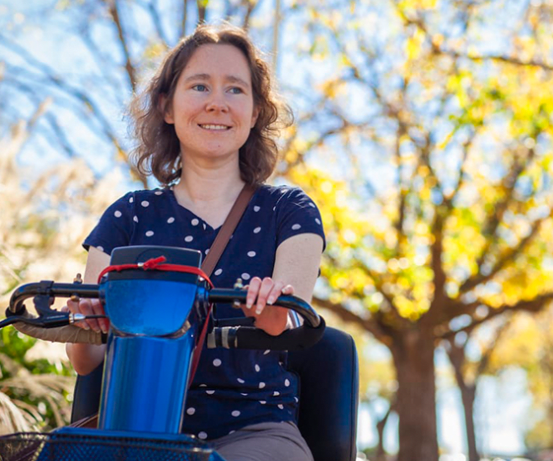Mobility At Home
Do you or a loved one still want to live at home, but need a little help? As we age, or undergo medical treatments that restrict our mobility, we need to consider the issue of mobility and safety around the home.
Many people want to remain living in their own homes for as long as possible. Thankfully, with the help of mobility aids and other equipment, most people can continue to live a safe and comfortable life at home. In this article we’ll take a quick look at how to improve your mobility and safety at home.
Avoiding falls
A loss of mobility can put you at greater risk of falling. For older people, this often results in a hip fracture. Assessing your living environment, and installing a few basic safety features around your home can dramatically improve your safety and mobility.
It’s a good idea to take the time to move around your home and identify areas where you may have trouble. Are there steps or stairs that you find difficult to climb? How about rugs on the floor that you could trip on? Do you have support rails in the bathroom? Taking basic measures to fall-proof your home can save you a lot of trouble down the track.
Installing some slip-proof rugs around the house and adding support bars in the bathroom can make a big difference to the safety of your home.
Mobility around the home
Many people choose to use either a walker or electric scooter to help them move around the home. Choosing the right option for you requires a good knowledge of your individual mobility challenges, as well as the amount of space you have at home.
Some scooters are designed for use in smaller homes, while others are designed for use in large areas like shopping centres. Talk to your physical therapist about which mobility aid is best for you.
Manoeuvering in and out of bed can prove difficult for people with limited mobility, over bed poles are great aid to help users reposition safely.
If your home has stairs, stairlifts can make a huge difference for your mobility and independence. Stairlifts can be difficult to find the right fit so doing your research and asking the right questions is essential before purchase.
Mobility ramps
If you or your loved one uses a wheelchair or mobility scooter, a mobility ramp is going to be essential. Mobility ramps allow you to move safely from one area to another. They help you to get your wheelchair or mobility scooter into a vehicle, up a curb or over a few steps.
Mobility ramps are a good, cost-effective alternative to installing permanent ramps around your home. You can usually choose from portable ramps, folding ramps or one-piece threshold ramps.
Bathroom safety and support
If you have a disability or mobility problem, navigating the bathroom can be difficult. In fact, basic activities like using the toilet or having a shower can be dangerous if you are unsteady on your feet or have balance problems.
Installing safety rails and/or grab rails / bars is a great idea. Grab bars can be installed in a shower or bathtub. In addition to helping you maintain your balance; they can also lessen fatigue while you are in a standing position. Grab bars around your shower or bath can make the process of stepping into and out of the bath or shower much easier and safer. Toilet safety rails are installed around the toilet. They provide extra balance and stability while you are trying to sit down or stand up.
Using a commode is another option. A commode is a moveable toilet that doesn’t use running water. A commode looks like a chair with a toilet seat. It has a bucket or container underneath which can be removed for cleaning after it is used.
A commode is a good idea if you have difficulty getting to your bathroom. It’s a great way to adapt your house to your needs. Some people put them next to their bed and use them at night time to avoid waking up their care givers. Commodes can also be discreetly stored away and transported. Many commodes are light and sturdy.

Shop Mobility Aids
We’ve got you covered with our extensive product range.
Do pressure cushions come in different shapes and sizes?
Pressure cushions are available in many of shapes and sizes. They are also made from many different materials. Things such as your height, weight, mobility limitations and any other existing health conditions should all be taken into account when choosing a pressure cushion.
Which pressure care cushion is right for me?
Every person is a little different, so in order to choose the best pressure cushion for your needs, it’s a good idea to talk to an expert. Talk to your physiotherapist or primary care physician in the first instance, and then have a chat with a friendly team member at Mobility Aids Australia.
Ultimately, choosing the right pressure care cushion for you will come down to having a good understanding of your needs, and whether or not you already have pressure sores.
